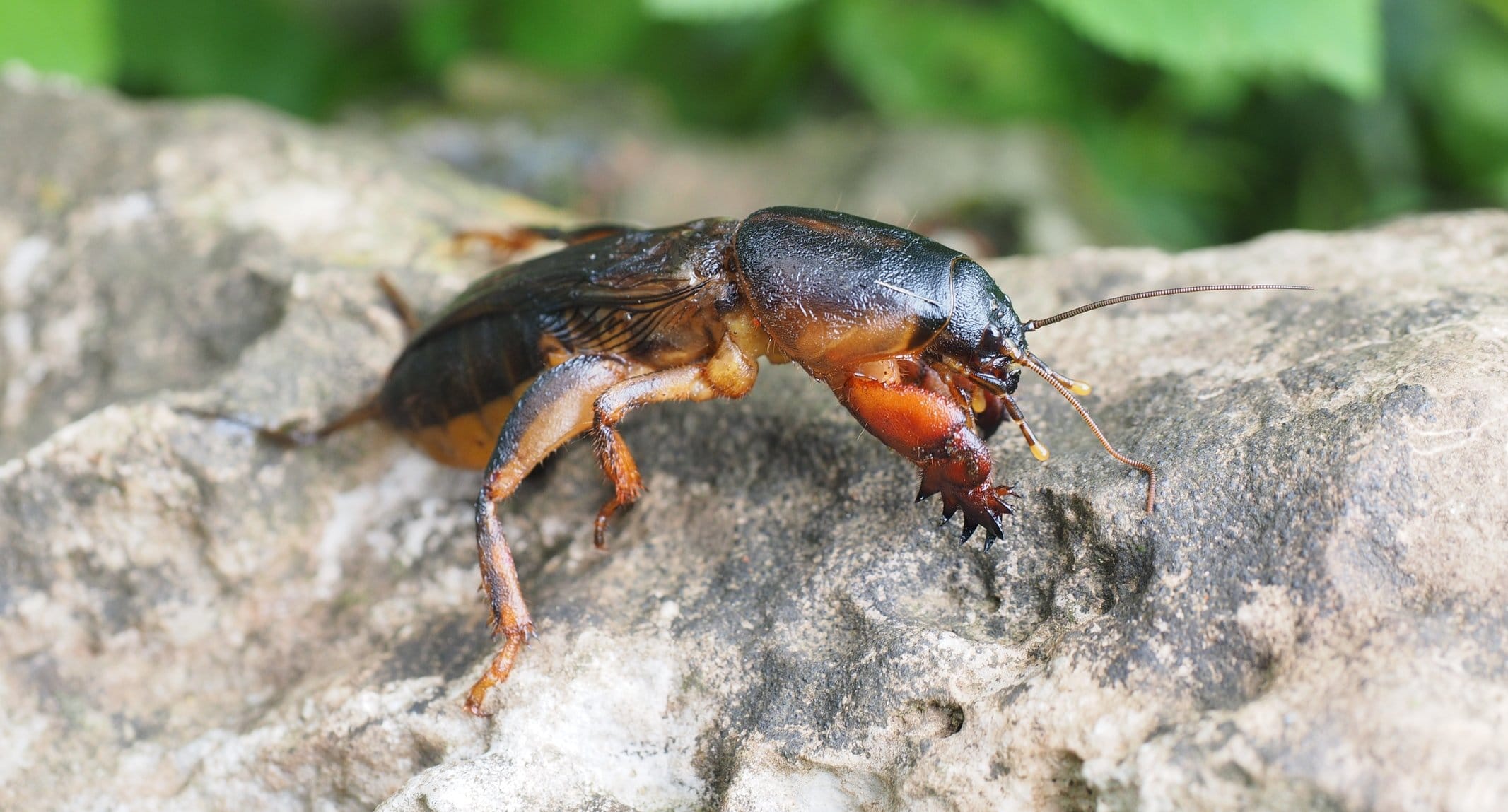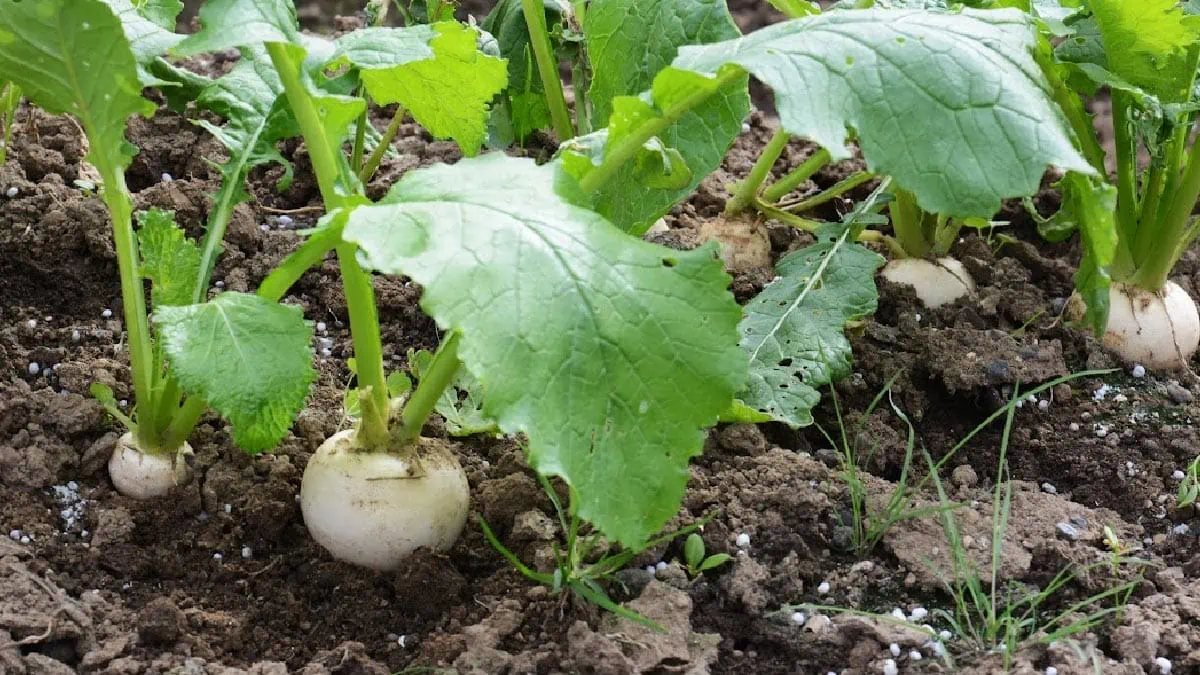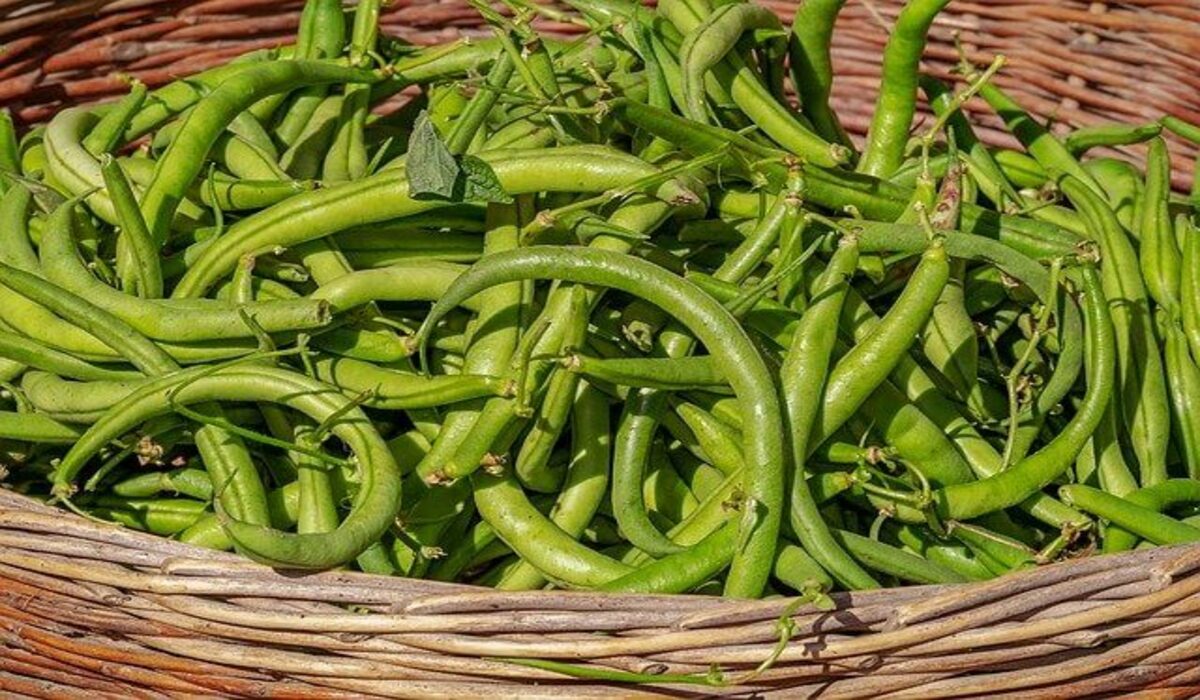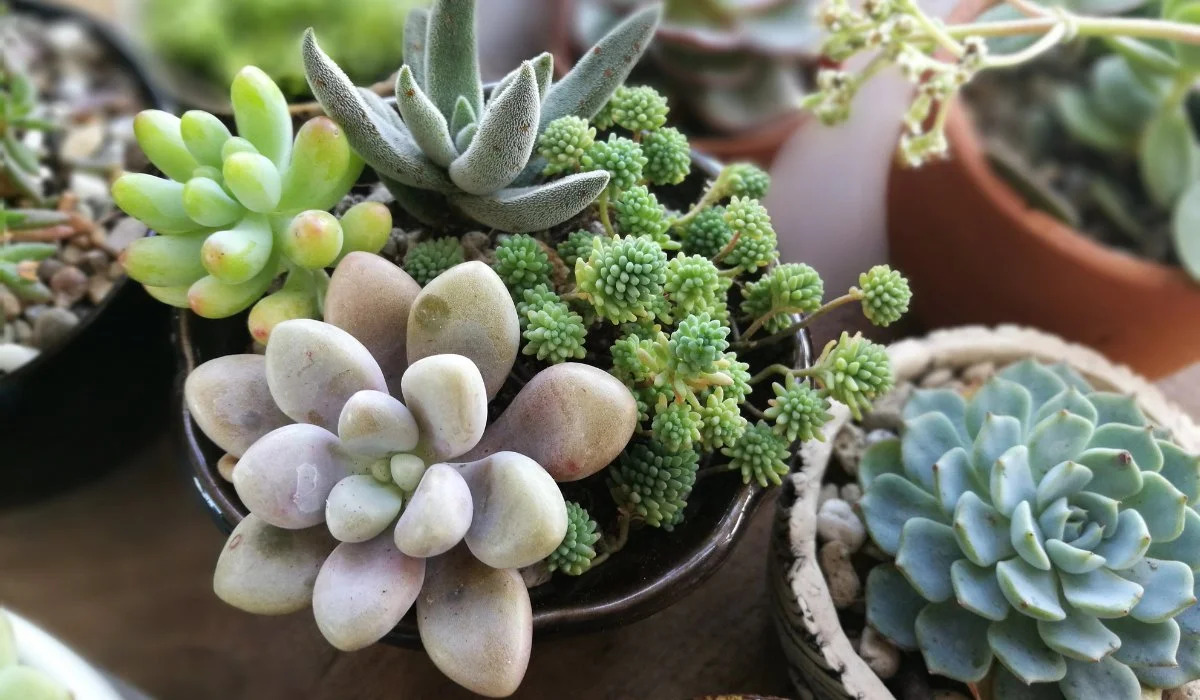Home>Gardening Basics>Getting Started>What Is A Good Ground Cover To Prevent Weeds


Getting Started
What Is A Good Ground Cover To Prevent Weeds
Modified: January 22, 2024
Discover the best ground cover options to effectively prevent weeds and maintain a healthy garden. Get started with our expert tips and advice.
(Many of the links in this article redirect to a specific reviewed product. Your purchase of these products through affiliate links helps to generate commission for Chicagolandgardening.com, at no extra cost. Learn more)
Table of Contents
Introduction
Introduction
When it comes to maintaining a beautiful and healthy garden or landscape, dealing with weeds can be a constant battle. Fortunately, there is a natural and effective solution: ground cover. Ground cover not only adds aesthetic appeal to outdoor spaces but also serves as a powerful tool in weed prevention. By choosing the right ground cover, you can significantly reduce the growth of unwanted weeds and minimize the need for constant maintenance.
Ground cover refers to low-growing plants that spread across the ground, creating a dense mat that inhibits weed growth. These plants not only help to smother out weeds but also provide numerous other benefits, such as retaining soil moisture, preventing erosion, and adding visual interest to the landscape.
In this comprehensive guide, we will explore the various types of ground cover, the factors to consider when choosing the right option for your specific needs, and the best ground covers to prevent weeds. Whether you are a seasoned gardener or just starting out, understanding the potential of ground cover can revolutionize the way you approach weed management and enhance the overall health and beauty of your outdoor spaces.
Benefits of Using Ground Cover
Using ground cover in your garden or landscape offers a multitude of advantages beyond weed control. Here are some key benefits:
- Weed Suppression: One of the primary benefits of ground cover is its ability to suppress weed growth. By forming a dense mat over the soil, ground cover shades out sunlight, making it difficult for weeds to germinate and thrive.
- Moisture Retention: Ground cover helps to retain soil moisture by reducing evaporation. This is especially beneficial during hot and dry periods, as it minimizes the need for frequent watering and promotes healthier plant growth.
- Erosion Control: The dense network of ground cover plants helps to stabilize soil and prevent erosion, particularly on slopes or areas prone to runoff. This is crucial for maintaining the integrity of the landscape and preserving topsoil.
- Enhanced Aesthetics: Ground cover adds visual appeal to outdoor spaces, filling in bare areas with lush foliage and vibrant blooms. It can be used to create dynamic textures, define borders, and complement other garden features.
- Reduced Maintenance: Once established, ground cover requires minimal maintenance compared to traditional lawns. This can save time and effort, making it an attractive option for busy homeowners and commercial landscapes.
- Habitat for Beneficial Insects: Many ground cover plants attract pollinators and beneficial insects, contributing to a healthy ecosystem within the garden. This natural pest control can help balance the overall biodiversity of the landscape.
These benefits make ground cover a valuable addition to any garden or landscape, offering both practical and aesthetic advantages while contributing to sustainable and eco-friendly landscaping practices.
Factors to Consider When Choosing Ground Cover
When selecting the right ground cover for your specific needs, several important factors should be taken into consideration to ensure optimal results. These factors include:
- Light Requirements: Assess the amount of sunlight the area receives throughout the day. Some ground cover plants thrive in full sun, while others prefer shaded conditions. Choosing a ground cover that matches the light levels of your site is crucial for successful growth.
- Soil Type and pH: Different ground cover species have specific soil preferences. Consider the soil composition, drainage, and pH levels of your garden or landscape to select a ground cover that will thrive in those conditions.
- Climate and Hardiness: Take into account the climate and hardiness zone of your region. Certain ground cover plants are more tolerant of extreme temperatures, frost, or drought, making them better suited for specific environments.
- Height and Spread: Determine the desired height and spread of the ground cover based on the area you want to cover. Some ground cover plants form low, compact mats, while others have a more sprawling growth habit. Matching the plant’s size to the available space is essential.
- Water Needs: Evaluate the water requirements of potential ground cover options. Some plants are drought-tolerant, while others need regular moisture. Selecting a ground cover that aligns with your watering capabilities and conservation goals is important.
- Maintenance Level: Consider the maintenance demands of different ground cover species. While many are low-maintenance once established, some may require more frequent pruning, deadheading, or division to keep them in check.
- Intended Use: Determine the intended purpose of the ground cover. Are you looking to fill in bare spots, create a living mulch, or add seasonal color? Understanding the primary function of the ground cover will help narrow down the options.
By carefully evaluating these factors and conducting thorough research on suitable ground cover species, you can make an informed decision that aligns with the unique characteristics and requirements of your garden or landscape.
Types of Ground Cover
Ground cover plants come in a diverse array of species, each offering unique characteristics and benefits. Understanding the different types of ground cover can help you make an informed choice based on your specific landscaping needs. Here are some common categories of ground cover:
- Creeping Perennials: These low-growing plants spread horizontally, forming a dense carpet of foliage. Creeping thyme, creeping phlox, and creeping Jenny are popular choices known for their vigorous growth and ability to fill in spaces quickly.
- Grasses and Sedges: Ornamental grasses and sedges provide excellent ground cover with their graceful, arching foliage. They are well-suited for naturalizing areas and adding texture to the landscape. Carex, blue fescue, and mondo grass are examples of grasses and sedges used for ground cover.
- Evergreen Shrubs: Certain compact shrubs and woody plants serve as effective ground cover, offering year-round foliage and, in some cases, seasonal blooms. Boxwood, cotoneaster, and juniper are popular choices for creating a durable and attractive ground cover layer.
- Perennial Herbs: Many culinary and aromatic herbs, such as oregano, thyme, and lavender, can be utilized as ground cover. These plants not only provide fragrant foliage but also attract pollinators and offer culinary benefits.
- Native Plants: Utilizing native ground cover plants can provide ecological benefits while requiring minimal maintenance. Native species are adapted to the local environment and support indigenous wildlife, making them valuable additions to sustainable landscapes.
- Flowering Ground Covers: For seasonal color and visual interest, flowering ground cover plants are an excellent choice. Species such as creeping phlox, candytuft, and ajuga produce vibrant blooms that enhance the aesthetic appeal of the landscape.
- Living Mulches: Some ground cover plants act as living mulches, suppressing weeds while enriching the soil and conserving moisture. Examples include clover, sweet woodruff, and violets, which contribute to a healthy and balanced garden ecosystem.
By exploring these different types of ground cover, you can identify options that align with your landscaping goals, whether you seek year-round coverage, seasonal color, or ecological sustainability.
Best Ground Covers to Prevent Weeds
When it comes to selecting ground cover specifically for weed prevention, certain plants stand out for their ability to effectively suppress weed growth and create a resilient ground layer. Here are some of the best ground covers renowned for their weed-suppressing qualities:
- Creeping Thyme (Thymus serpyllum): This aromatic and low-growing herb forms a dense mat of foliage, smothering out weeds while producing delicate pink, lavender, or white flowers in the summer. Creeping thyme thrives in sunny locations and is well-suited for edging pathways and rock gardens.
- Ajuga (Ajuga reptans): Also known as bugleweed, ajuga is prized for its rapid spread and attractive, evergreen foliage. Its dense growth habit makes it an excellent weed deterrent, and it thrives in both sun and partial shade, making it versatile for various landscape settings.
- Creeping Jenny (Lysimachia nummularia): With its trailing stems and vibrant yellow foliage, creeping Jenny is a popular choice for ground cover. It forms a thick mat that chokes out weeds and is particularly effective in moist or boggy areas, adding a pop of color to the landscape.
- Periwinkle (Vinca minor): This vigorous, trailing plant features glossy green leaves and charming blue or white flowers. Periwinkle is adept at suppressing weeds and thrives in shaded locations, making it an ideal solution for areas with limited sunlight.
- Creeping Phlox (Phlox subulata): Renowned for its stunning spring blooms and evergreen foliage, creeping phlox forms a dense carpet of color while effectively inhibiting weed growth. It prefers sunny locations and is often used to cascade over walls or cover slopes.
- Wintercreeper (Euonymus fortunei): This versatile evergreen shrub offers excellent ground coverage and weed control. Its dense foliage and adaptability to various light conditions make it a reliable choice for suppressing unwanted vegetation.
- Thyme-Leaved Speedwell (Veronica serpyllifolia): This low-growing perennial produces delicate blue flowers and forms a dense mat of foliage, effectively crowding out weeds. It thrives in sunny to partially shaded areas and is well-suited for edging and mass planting.
These ground covers not only provide an attractive and resilient layer of vegetation but also serve as formidable opponents to weed growth, making them valuable assets in creating low-maintenance and visually appealing landscapes.
Conclusion
Ground cover plays a pivotal role in weed management and landscape enhancement, offering a myriad of benefits that go beyond weed suppression. By carefully considering factors such as light requirements, soil type, climate suitability, and intended use, you can select the most suitable ground cover for your specific landscaping needs. Whether you opt for creeping perennials, grasses and sedges, evergreen shrubs, or flowering ground covers, each type of ground cover brings unique characteristics and advantages to the table.
When aiming to prevent weeds, certain ground covers stand out for their exceptional ability to smother out unwanted vegetation and create a resilient ground layer. Plants such as creeping thyme, ajuga, creeping Jenny, periwinkle, creeping phlox, wintercreeper, and thyme-leaved speedwell are renowned for their weed-suppressing qualities, offering both practical and aesthetic benefits to the landscape.
By incorporating these best ground covers into your garden or landscape design, you can significantly reduce the need for ongoing weed control measures while enhancing the visual appeal and ecological sustainability of your outdoor spaces. Whether you are a homeowner, landscape professional, or gardening enthusiast, the strategic use of ground cover can transform the way you approach weed prevention and overall landscape maintenance, leading to a more vibrant, low-maintenance, and weed-resistant environment.
Embracing the diverse world of ground cover plants opens up endless possibilities for creating beautiful and resilient landscapes while minimizing the impact of weeds. With the right ground cover in place, you can enjoy a thriving and weed-free outdoor environment that reflects your unique vision and contributes to the overall health and beauty of your surroundings.








